Don't wanna be here? Send us removal request.
Text
A Simple, Effective Way to Ease Stress and Anxiety
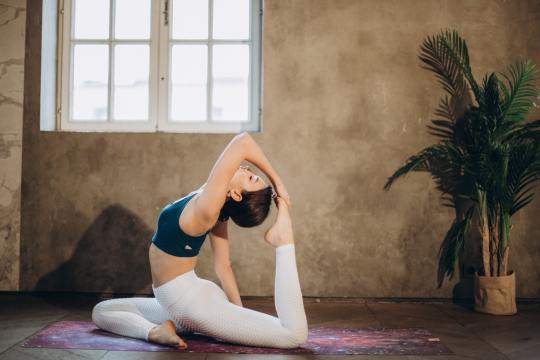
Americans work longer hours, take fewer vacations, and retire later than anyone in the industrialized world. It is no wonder we are among the most stressed-out people on the planet. We also have a bad habit of dealing with the pressure and anxiety we encounter in unhealthy ways. We eat too much and drink too much and pretend we're in control. But nothing could be further from the truth.
Medication nation
In an effort to deal with agitation and unease, more and more Americans are turning to prescription pills. Brands like Zoloft, Paxil, and Cymbalta have become household names, with Americans spending tens of billions of dollars each year on drugs designed to treat anxiety and depression. But like all prescription medications, these powerful mood-altering drugs have a laundry list of unpleasant side effects, from nausea and insomnia to fatigue and sexual dysfunction. There must be a better way...
Meditation nation
The one silver lining in an otherwise ominous sky is the recent rediscovery of an ancient form of stress relief. Whether used for spiritual enlightenment or emotional healing, meditation has been a part of human history for thousands of years. Although it originated in Asia, meditation is now universal, appearing in cultures the world over. With that said, the practice is less popular in the Western world, where it has struggled to gain mainstream acceptance... Until recently, that is.
According to a 2007 U.S. Census Bureau Survey, nearly 10 percent of the adult population practices some form of meditation, up from only 8 percent in 2002. As a result, a growing number of yoga schools and medical centers are opening their doors to the 20-plus million Americans who use meditation on a regular basis.
Research findings
Although Western medicine has long questioned the benefits of meditation, it has been forced to reevaluate its position in recent years as scientific evidence of meditation's healthfulness has come to light. In one study completed at Johns Hopkins University, researchers found that meditation helped relieve anxiety, pain, and moderate depression in some patients. Another study found a 10 to 20 percent improvement in symptoms of depression for subjects who meditated regularly. Those numbers are similar to the positive effects of antidepressants, with far fewer side effects!
What is meditation?
Most Westerners have only a vague idea of what meditation is and how it works. They might know, for instance, that it involves concentrated focus upon a sound, object, movement, etc. in order to increase awareness of the present moment. While others believe that meditation consists of simply clearing the mind and shutting the world out. And the truth is that both of those opinions are correct. Meditation can involve deep thinking or almost no thinking at all. Some of the most common ways to meditate include:
· Guided meditation: Also known as visualization or guided imagery, this popular method of meditation involves relaxing mental images of places and situations. Practitioners are instructed to incorporate as many of their senses as possible, including sights, smells, sounds, and textures of soothing objects and environments. Because it takes time to paint a comforting mental picture, newcomers may benefit from expert instruction by a teacher or guide.
· Mindfulness meditation: Rather than trying to escape from ourselves or our current predicament, this type of meditation helps us increase our awareness by living in the moment. How? During a mindfulness meditation session, you focus on what you experience, such as your breathing, passing thoughts, or emotions. However, you do not linger on the details of any of them, but rather let them pass without judgment.
· Mantra meditation: Popular in the Buddhist faith, when used for relaxation purposes mantra meditation consists of simply repeating a calming word or phrase to keep distracting thoughts at bay. Although this simple technique can be practiced anytime, anywhere, it can take many months of practice to stop your mind from wandering during mantra recitations. Beginners are instructed to focus intently on the sound of their own voices in order to block out everything else.
· Transcendent meditation: One of the most widely practiced forms of meditation, the transcendent variety also involves mantras. What distinguishes it from the aforementioned technique is that the mantra recitations are not used to block everything out, but rather to slow mental functioning to relaxing levels. At last count, more than 10 million people practiced transcendent meditation around the world.
· Heart rhythm meditation: With a focus on controlled breathing, this method seeks to coordinate the breath and the heartbeat to reduce anxiety and stress. Practitioners utilize several different rhythmic breathing patterns where inhalations and exhalations are made at equal intervals and beats. For example, the "swinging breath" method features 8 beats in and 8 beats out. Use of full lung capacity is imperative, as is concentration on the heartbeat, which should slow with breathing into more consistent patterns.
Yoga: Although it is not the focus of the discipline, meditation is involved in most yoga exercises and techniques. From breathing exercises to stretches and poses, yogis and their students use meditation to develop more flexible bodies and calm minds. Balance and concentration is achieved by focusing on the moment and shutting out the world for awhile. Those who are able to master basic meditation techniques generally progress more rapidly in yoga training for those very reasons.
Tai chi: Probably the most active way to achieve relaxation through meditation, tai chi is a gentle Chinese martial art that consists of a series of slow, graceful movements that are performed while practicing deep breathing. Commonly referred to as moving meditation, tai chi promotes both physical and mental relaxation. The popular Chinese pastime has also be shown to increase concentration and focus in those who suffer from anxiety disorders.
Common features
Generally speaking, meditation is an umbrella term that describes any type of focused activity that helps produce a state of deep relaxation. So while there may be different ways of getting there, all types of meditation share the following features:
· Focused attention: A fundamental component of meditation, focusing your attention on a sound, image, or activity helps clear the mind, which can produce a state of profound relaxation.
· Deep breathing: One of the simplest and most effective ways to relax is to simply take deep, slow breaths from the abdomen. This helps reduce the movement of the neck, shoulder, and upper chest by shifting it to the diaphragm, where it belongs. It also helps the lungs take in more oxygen, which has a calming effect on the body and mind.
· A quiet environment. If your goal is to quiet your mind, it helps to be in a silent setting with few distractions. For obvious reasons, we strongly suggest that you keep cell phones, computers, TVs, and other electronics out of these areas.
· A comfortable position. Some types of meditation are quite strict about body positioning, while others are far less formal. When practicing on your own, use a comfortable position that helps you get the most out of your meditation.
Health benefits
As different as they may be, all of the aforementioned techniques can help you achieve inner peace. This state of calm and repose has salubrious effects that go far beyond stress reduction and anxiety relief. When practiced on a regular basis, people who meditate report the following health benefits:
· Lower blood pressure
· Reduction of negative emotions
· Less fear and anxiety
· Better stress management skills
· Improved mental concentration and focus
· Better sleep
· Decreased muscle tension
· More energy
· Better memory
· Fewer colds and minor illnesses
Daily meditation
One of the most appealing aspects of meditation is that it can be practiced wherever you are - whether at home, at work, or on the road. But to get the maximum possible benefits of meditation, we recommend daily sessions for improved physical and emotional wellbeing. With that in mind, here are a few simple ways you can practice meditation on your own.
Breathing. Whether it lasts ten minutes or two hours, breathing in and out in a slow, controlled way can help relieve stress and anxiety and promote healthy sleep.
Progressive muscle relaxation. A slightly more advanced technique, progressive relaxation involves focusing your attention on certain parts of your body, particularly on sore or tense areas such as the hands or feet, to provide relief. When combined with deep breathing, it has an impressive track record.
Repeat a mantra. Focusing on the sound your own voice as you repeat a certain word or phrase to relax is a time-test technique that crosses many different cultures, religions, and healing disciplines. You are free to create your own mantra or to pick a popular one from an established form of mantra meditation, such as transcendent meditation.
Walk and meditate. A healthy and efficient way to unwind, combining walking with meditation helps clear the mind and cleanse the body at the same time. One easy way to accomplish this is to focus on your body's movements instead of on the destination. Slow the pace a bit and breathe deeply as you step to get the most out of your daily constitutional.
5 notes
·
View notes
Text
Call it magic or a miracle or quantum physics in action, but despite of the term used, it is real. This premise is exactly the conclusion Mr. Hill wanted his readers to arrive at. Of course, meditation is not directly mentioned, only alluded to, but clearly meditation accelerates this entire creative process by reducing resistant thoughts which hinder progress. Regardless if while meditating you receive an urge to take a specific action which leads to a solution or chance meeting bringing you closer or delivering entirely a previously specified outcome, the objective is manifested.
The only prerequisite is that you must clearly define exactly what you want. Remember- "Definite Major Purpose". Begin to let yourself feel (believe) what you will experience when the object desired has arrived and let the universal powers do their part. You will quickly find this power is quite useful in improving your well-being when practiced routinely with meditation.

3K notes
·
View notes
Text
I personally believe the reason time appears to collapse between the desire (intention) and actual delivery is directly related to the reduced level of mental (Thinking Mind) resistance we hold while in certain meditative states. We receive sooner that which is wanted in our life because of the drastically reduced counterproductive, opposing beliefs or thoughts. During meditation these contrary brain wave thought forms are minimized thereby allowing quantum mechanisms to more fully dominate.
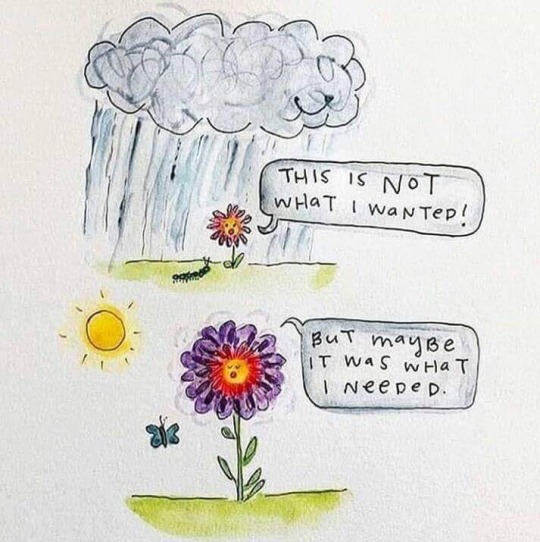
weekly self-affirmation 🌱
“I accept my power.”
3K notes
·
View notes
Text
Interestingly enough in the book, Mr. Hill did not expressly reveal the step-by-step process to create circumstances which aligned with ones invocation of a positive mental attitude. He left that for the reader to discover. However, he did provide clues and examples which he documented through interviewing over 500 successful people while researching his first course study titled: The Law of Success. He went on to describe this idea as a "Definite Major Purpose" in order for the reader to be challenged and ask the question- In what do I truly believe? His philosophical perspective was that 98% of people had no firm beliefs leading them to be handicapped in achieving what they want in life. So yes, change your thoughts, change your world.
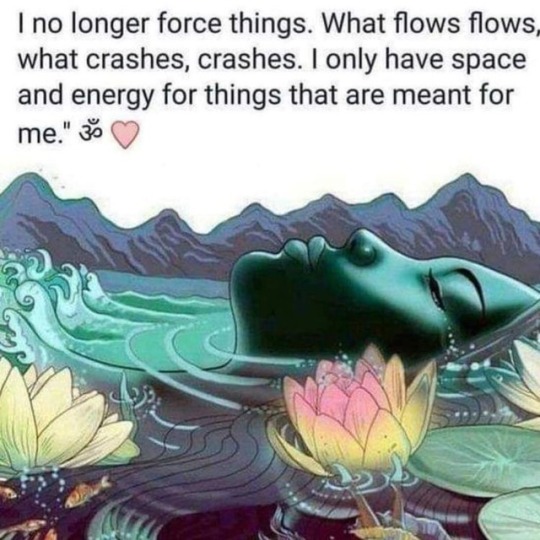
3K notes
·
View notes
Text
This knowledge is equally important to understand and apply its power when practicing meditation. Deliberate thought combined with meditation is an extremely powerful combination. By now everyone has got a little taste of the premise in the movie "Secret" regarding the subject of manifestation or as I like to label it- "deliberate intentions of thought". While this subject matter may seem new and novel to a whole segment of the population, like meditation, it has existed for a very long time. Ever heard the famous quote from Napoleon Hill in his 1937 book titled- Think and Grow Rich? It sure sounds like it could be in the Secret:
10. Mindfulness I
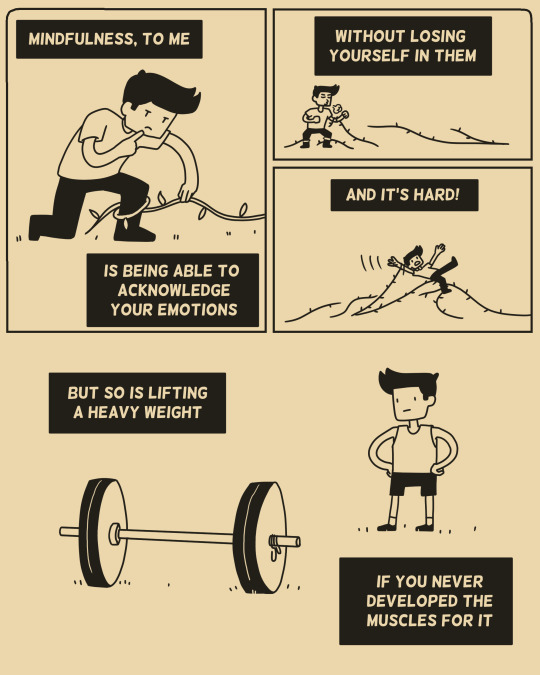

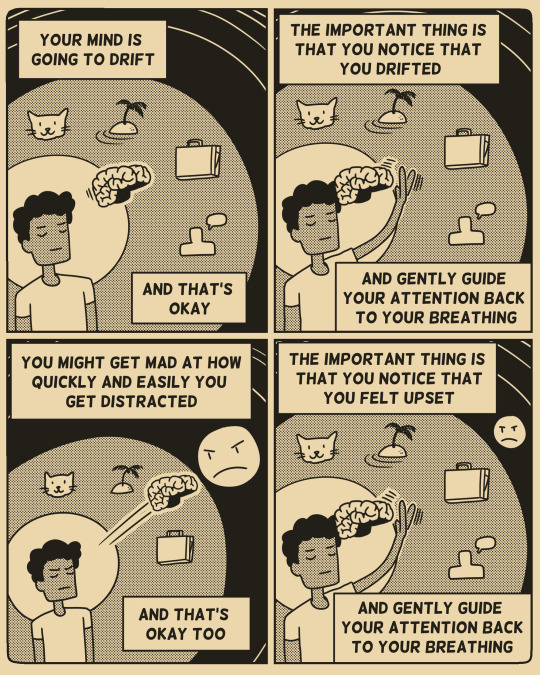


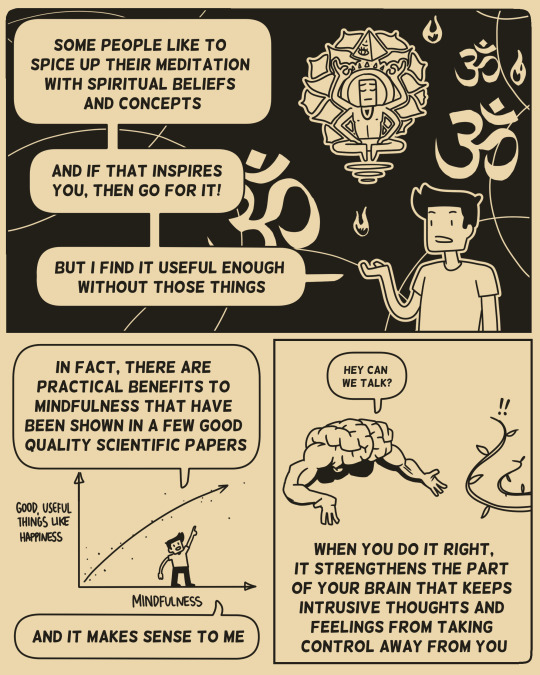
I remember hearing several years ago that people were getting burnt out on the overuse of the word “mindfulness”, which is super unfortunate. I hope it doesn’t have too many negative associations for you, because it’s a super practical skill!
9K notes
·
View notes
Text

♡ Meditate for 5-20 Minutes
Meditation sensitizes us to energy, making it much easier for us to control the energies in our spell work. It also increases our focus over time, making it easier to focus during ritual and making it easier to enter trance or experience gnosis. Meditation is a great foundational skill to practice as a witch.
♡ Read Tarot/Runes/Scry/Etc. For 10 Minutes
Take 10 or so minutes a day to practice divination. Divination is a great way to sharpen your intuition. And, if you typically use divination solely for spirit communication, taking time to use your preferred medium daily in other contexts will make you more comfortable with it and make future communication clearer.
♡ Read a Witchcraft Book for 10+ Minutes
Taking just 10 or so minutes a day to read will help develop and build your Craft slowly but consistently. And doing a little reading every day is a lot more sustainable than trying to read a whole book once every blue moon.
♡ Cleanse Yourself and Your Room
When we go out into the world, we often pick up energy from the people we interact with. Cleansing yourself and your room daily will help prevent you from feeling bogged down with unwanted or negative energy.
♡ Pray to the Deities You Worship/Give Offerings to the Important Spirits and Entities in Your Life
Having spiritual allies is beneficial as a witch. Maintaining your relationship with these deities or spirits is key in ensuring that they continue to help you in the future. It’s all about reciprocity. So, take some time each day to pray to your god(s), honor your ancestors, give offerings to spirit allies, etc.
♡ Do an Energy Work Exercise
Creating energy balls or other energy constructs is a common energy work exercise. Taking some time to play around with energy each day will make you more comfortable with working with it during spell work and ritual. Basic energy work exercises are foundational skills for more complex tasks like creating servitors/thoughtforms and wards.
♡ Journal in Your Grimoire/Book of Shadows
Write a brief report of your day: anything that you experienced during meditation, cleansing, what you learned from your divination session, any interesting ideas you’ve learned from your daily reading/research, and anything else you think is necessary. You’ll be able to see your growth as a witch over time if you consistently keep a journal documenting your activities.
Creating a daily practice takes time! And everyone’s daily practice is different. What do you like doing daily to further your Craft?

3K notes
·
View notes
Text
Are you ready to dive into infinite possibilities of the more unique, inherent benefits of meditation? How far can one go into the universal domain to retrieve enhanced power to intentionally co-create in this world? And no, you don't have to become a Zen Buddhist monk. Rather than go off into the quantum realm too far, allot is becoming understood within the research community about the creation power of our thoughts.

5K notes
·
View notes